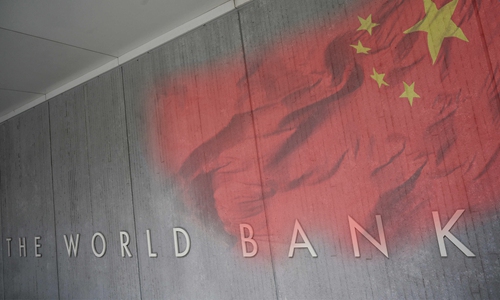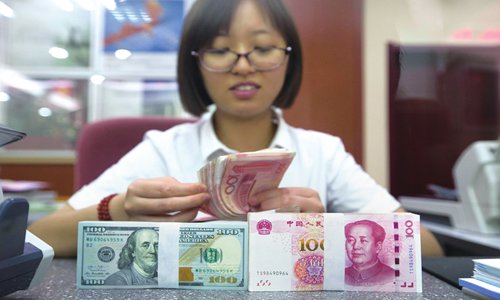HOME >> SOURCE
Why does World Bank still extend loans to China?
By Wang Cong Source:Global Times Published: 2019/12/8 15:28:39
Beyond commercial viability, lending will also help other economies

Photo:GT
After the World Bank adopted a plan of a reduced loan plan to China, US officials, including President Donald Trump, rushed to blast the move and went as far as calling the bank to stop all loans to China. Their single argument is that China is now "rich" and does not need the low-interest loans anymore.
But such an argument is ignorant of how the multilateral bank functions and the facts regarding its projects in China, which are not only aimed at helping China's population of poverty but also address issues of global implications. The loans are not charity but investment that seeks sound return, despite the low interests, they noted.
After the World Bank issued a multi-year loan program with China of $1 billion to $1.5 billion loans each year until 2025, Trump Tweeted on Friday that "China has plenty of money and if they don't, they create it. Stop!"
"I agree with the idea that only poor countries should get loans from the World Bank. But their argument that China is not poor anymore is a complete disregard for the fact that despite its considerable achievements, China is still a developing country with a good number of people living under poverty," said Mei Xinyu, a research fellow at the Ministry of Commerce's Chinese Academy of International Trade and Economic Cooperation.
China has become the world's second-largest economy, but per capita income remains only about a quarter of the average for high-income countries and there are 372.8 million people below the "upper middle-income" international poverty line of $5.5 a day, according to the World Bank.
China is also moving to address serious issues such as imbalanced development in regions, with some inland western areas still lagging behind the development of those on the east coast, as well as in environmental protection, experts said.

An employee counts banknotes at a bank in Taiyuan, North China's Shanxi Province, on August 2. Photo: VCG
"So by all standards, China still qualifies for the World Bank loans, which are exactly aimed at addressing these issues from poverty to balanced and sustainable growth," said Wang Jun, deputy director of the department of information at the China Center for International Economic Exchanges. "The US objection is purely political and in line with its selfish attempt to contain China's rise."
The World Bank's portfolio in China consists of $63.23 billion in loans for 428 projects and is concentrated on addressing such issues as well, with 70 percent being focused on environmental objectives and about two-thirds of its active projects are in western and central provinces where poverty rates are significantly higher.
"With these loans, the World Bank is not just helping China but extending help to developing countries neighboring China and beyond," Mei said, noting that sustainable development in China means sustainable growth for the world, given China's contribution to the world economy. "It is a fact that many countries, particularly small developing countries, rely on trade with China."
Over the past eight years, the world's second-largest economy contributed around 30 percent to global growth, according to the World Bank. It also said that the bank is also working to share China's experience in growth and poverty alleviation with the world.
Apart from the implications of the World Bank loans, China has also proven to be a reliable partner with the multilateral bank with a main focus on long-term sustainable growth, and will also have to choose projects with sound commercial viability, analysts said.
"Let's not forget, these are loans with interest, not charity, no matter how low is the interest," Mei said, adding that the World Bank decided to continue extending loans to China "not just because China needs them, but because China is also reliable." He noted that there is "not one single case" where China has defaulted on World Bank loans for the past four decades.
Posted in: ECONOMY